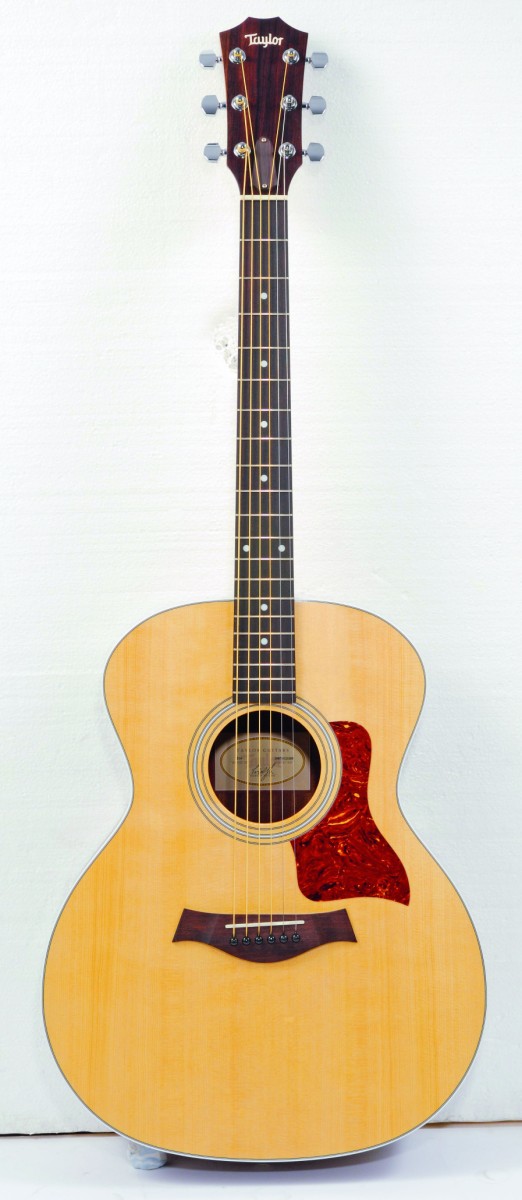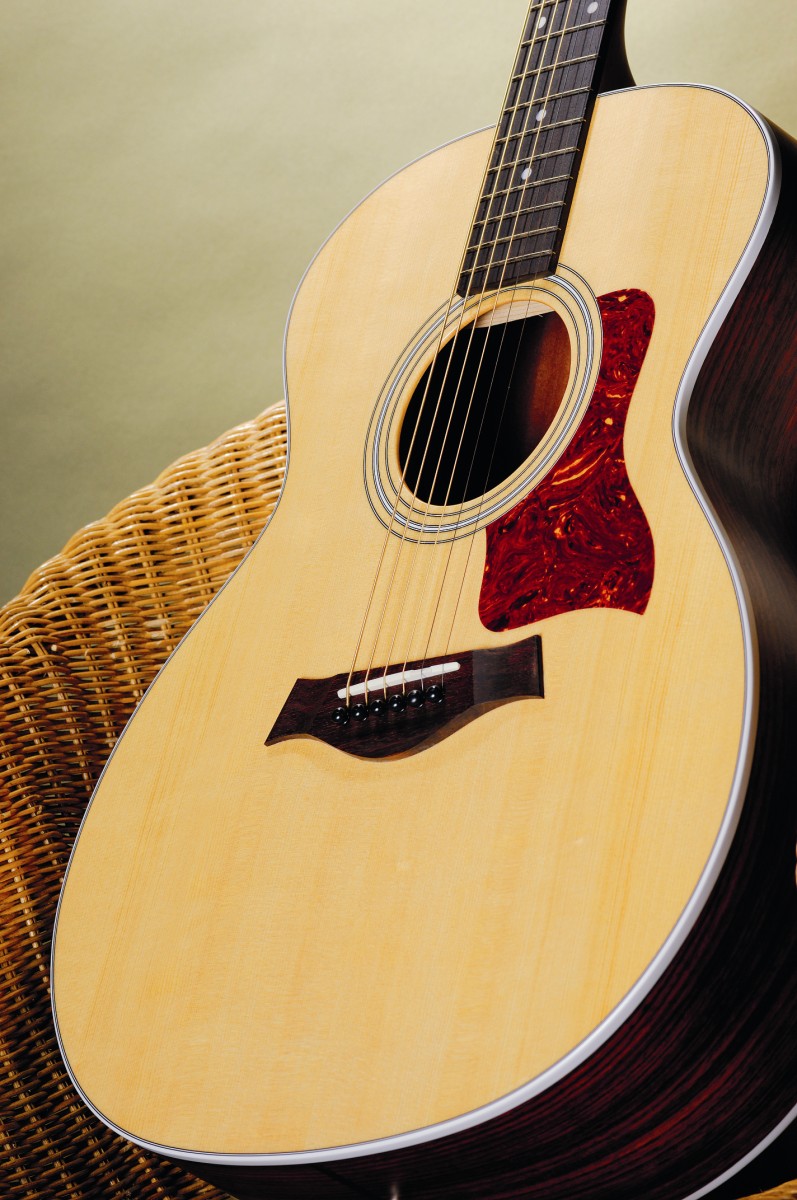MusicRadar Verdict
Attention to detail is up to the company's usual nigh-on faultless standard, and it plays well and sounds good. And when the guitars come at such new even more affordable prices, what more could you want?
Pros
- +
Plain and simple playing enjoyment.
Cons
- -
Not truly rosewood back and sides, if we're being picky.
MusicRadar's got your back



Taylor's 200 Series was launched in late 2003, soon after the even less expensive 100 Series was unveiled. Aimed at combating increasingly stiff competition from Far East and other North American brands, both occupied an important 'entry level' niche between the 15/16-size Big Baby dreadnought and the bottom of Taylor's mainstream catalogue, the 300 Series.
Initially, the 200 Series had just one model - the 214 grand auditorium - but this was subsequently joined by the 210 dreadnought plus Fishman Classic 4-powered electro versions of each.
Fast-forward to now and, alongside the company's recent restructuring of its higher-echelon acoustics, the 200 Series has had a makeover of its own.
Previously using solid sapele back and sides, the timber has been upgraded to rosewood but is now laminated. Is it a case of swings and roundabouts, then?
Yes, to an extent, but prices have been reduced by between £100 and £150 depending on model, and the instruments still include a hard case.
What's more, the finish of the solid sitka spruce top is now gloss rather than satin, and the electro variants now have ES Element electronics - an under-saddle version of Taylor's much-praised Expression System.
Though not the subject of this review, the simultaneously revamped all-satin solid spruce/laminated sapele 100 Series now carries the ES Element on its two electro models, and a grand auditorium has been added to hitherto dreadnought-only territory.
Want all the hottest music and gear news, reviews, deals, features and more, direct to your inbox? Sign up here.
Prices have come down here too. Another change to both series is that production has moved from Taylor's Californian factory to its secondary plant in Mexico, where the Baby and Big Baby are also made.
Overview
The 200 Series is intended to offer more modestly priced value, but there is very little evidence of 'dumbing down' in this grand auditorium's aesthetic appeal or constructional precision.
Indeed, were you to place the guitar alongside the £300 more expensive GA3 (formerly the 314), the only immediately striking difference - apart from the latter's solid sapele back and sides - is that the GA3's ?ngerboard is edged in white, where the 214's isn't bound at all.
You could go on to identify the GA3's fingerboard and bridge as ebony, whereas the 214's are rosewood, but frankly that's neither here nor there, and anyway the 'board is stained to resemble ebony.
On a point of historical trivia, the 214's fretboard and bridge were originally ebony, so this change has clearly been a cost-saving measure somewhere along the way.
You might argue that Taylor is being a tad economical with the truth in billing the back and sides as rosewood. In fact the innermost lamination is sapele or mahogany, and who knows what the hidden, in-between ply is?
However, the outward rosewood veneer is well chosen and carefully bookmatched, while the sitka top has a sprinkling of quality-indicative cross-silking even if there is a little winter-growth streaking in the graining that possibly wouldn't make it onto a more expensive Taylor.
Unlike 3 Series instruments upwards, which use a reasonably wide 44.5mm (1.75-inch) nut width, the 200s go with 43mm (1.69-inch), generally considered more comfortable for strumming.
In fact the 214 is perfectly obliging for fingerstyle too, thanks to relatively generous string spacing across the nut plus the regulation 55mm spacing at the bridge.
The shallow, evenly rounded profile is very comfortable, and the satin finish feels smooth and slick (unlike early 200s which were open-pored without grain filler).
Sounds
The 214 has the grand auditorium sound covered. It's well articulated and open for picking, while responsive easy-sustaining dynamics give it plenty of body and projection when strumming.
The fairly bright, taut tone, though quite firmly underpinned, perhaps lacks the low-end warmth you'd associate with a rosewood-backed instrument, but since it's not wholly rosewood, that's not surprising. Imagine something more mahogany-like, and you'll get the sonic picture.
All up, it's a very satisfying all-round tone for any number of playing styles.